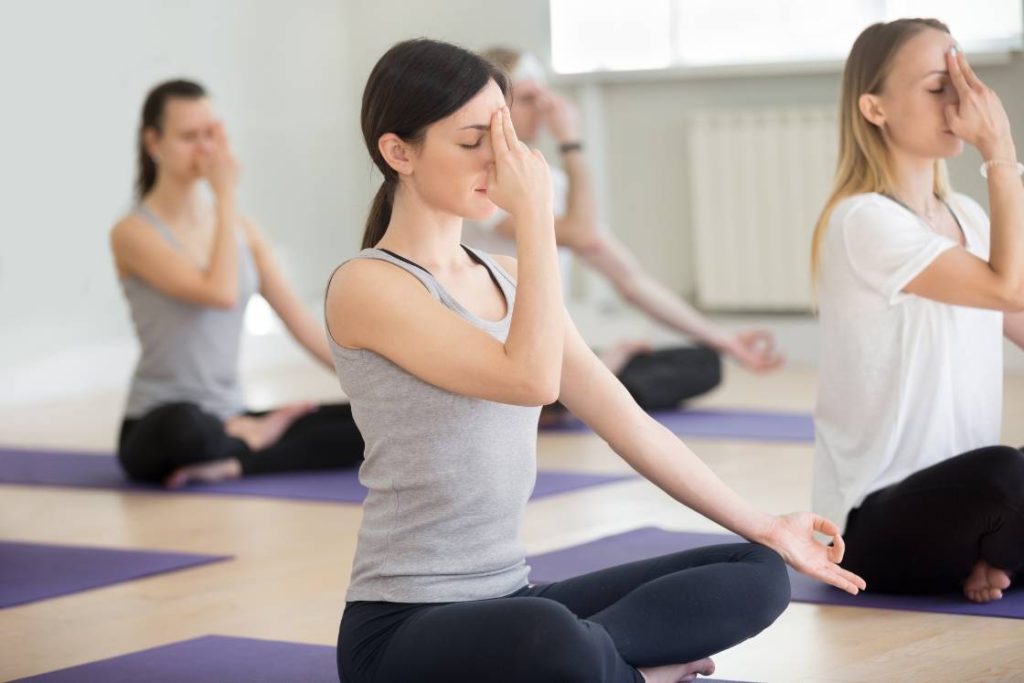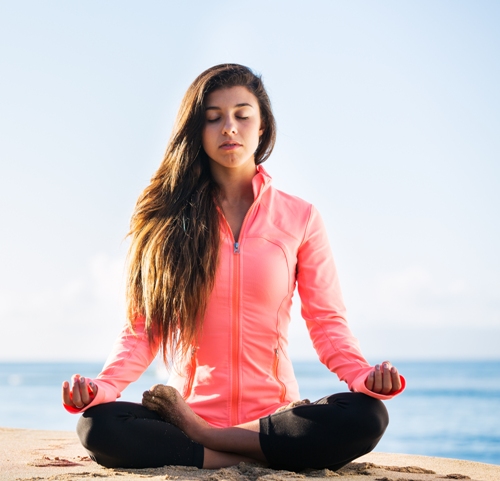


(Manipura at naval (or) visuddhi at throat). Spiritual aspirants can concentrate on the charkas during the practice. Due to that the respiratory centre is not stimulated for breathing, on the contrary it is inhibited and one experiences a quietened or a tranquihzed state of mind as there will be spontaneous stand still of respiration (apnea). The oxygen consumption increases and carbon-di-oxide is flushed out in the practise of Kapalbhati. This increases the consumption of O2 and elimination of CO2. But during Kapalbhati practice we breath 120 times per minute. In normal breathing we breath 16 to 20 times per minute. Increasing the number of strokes is safer than increasing the force of the strokes. This can be split 2-3 times and gradually the number of strokes can be increased. Initially, one cannot practice continuously for one minute. After practicing for one minute, end with smooth inhalation. The numbers of strokes should be two per second that is 120 stokes per minute. The abdominal strokes should be rhythmic and uniform. Regular practitioner can increase the duration of this for one minute carefully and can do three rounds, taking few normal breathing in between each round. But, it is advised for the beginners not to have intentional formation of mula bandha. This action involuntarily forms mula bandha. The vibrations created during Kapalbhati positively results in contraction of the perineum and anal sphincters. This is to be done very slight that the expelled air is not likely to be held back to any appreciable extent. There is one tradition, recommends slight narrowing of the glottis in Kapalbhati. It is advised to keep the glottis opened during the practise. The time duration of rechake is less than the puraka. The sound of the expiration is heard well and sound of inspiration is passive. As the abdominal muscles are relaxed in each and every stroke there will be comfort in continuing the practise. Every forceful exhalation should end smooth inhalation.

Have a smooth inhalation by relaxing abdominal muscles, then start forceful exhalation by contracting the abdominal muscles. Every round should begin with rechaka (exhalation) and should end with puraka (inhalation). Puraka follows rechaka and rechaka follows puraka without a break till one round is completed. Rechaka and puraka are performed in a quick succession. The volume of the air inhaled during puraka should be equal to volume of air exhaled during rechaka. Simply by relaxing the abdominal muscles the puraka is done. Puraka is performed very naturally by relaxing the abdominal muscles which in turn descends the diaphragm, thus the vertical diaphragm diameter of the thorax increases and internal pressure of lungs is lowered in order to make it equal to atmospheric pressure, the external air that moves in puraka is passive and supplementary act, no contraction is required. This action pushes up the diaphragm towards thorax, thus the air is expelled out forcefully. The fall and rise of the ribs are very slight during the Kapalbhati and are almost negligible.įorceful exhalation is performed during rechaka, by suddenly and vigorously contracting the abdominal muscles one should make on inward and upward push. The muscles which move freely are the diaphragm and the front abdominal muscles. Ribs are kept slightly raised and contracted throughout the practise of Kapalbhati. The technique of Kapalbhati is to start with forceful exhalation continued with smooth inhalation through both the nostrils. After adopting the posture, one should observe the normal breathing. Padmasana is the best preferred because the triangular base formed gives more stability and also it enables to maintain the erect posture of the spine. Technique of KapalbhatiĪny meditative posture can be adopted for the practice of Kapalbhati. It also affects all the parts of the respiratory system (From nose to Alveoli). KAPALBHATI – This cleansing process is related to respiratory system.


 0 kommentar(er)
0 kommentar(er)
